
You are now keeping bees. You have just installed your first package of honey bees in your hive. Yes, you are now a beekeeper!
But you are still feeling anxious. You are a bit unsure if this experiment will really work. You are not sure if you have the necessary beekeeping supplies. And you are not even sure what you’ll need to know to become a “real” beekeeper.
Most ‘newbees’ (ha!) feel the same tension. Managing honeybees requires a new skill set. That’s why I am going to share the tips that I wish I had known 20 years ago, when I first started keeping bees.
I call these my Top 10 Tips and Tricks for Keeping Bees and Becoming a Better Beekeeper.
Keeping Bees Tip #1: Join a Beekeeping Club
My first tip on keeping bees is basically, “Don’t do it alone.” Join a local beekeeping club or group. Take advantage of the chance to listen to monthly national speakers and watch live, in-person hive demonstrations. The chance to connect with other more experienced beekeepers is absolutely invaluable.
In the era of COVID-19, meetings are on Zoom—and in many ways that makes the meetings even more convenient. Local Beekeeping Associations are located all over the country. By doing a quick internet search, you can quickly connect with one.
Tip #2: Find a Beekeeping Mentor
Keeping bees can be SO much easier when you have a mentor. Tapping into this valuable resource has helped me through many “sticky” problems. My mentor has introduced me to nearby beekeepers who have the same local issues—such as weather, which has a big impact on the health of your bees.
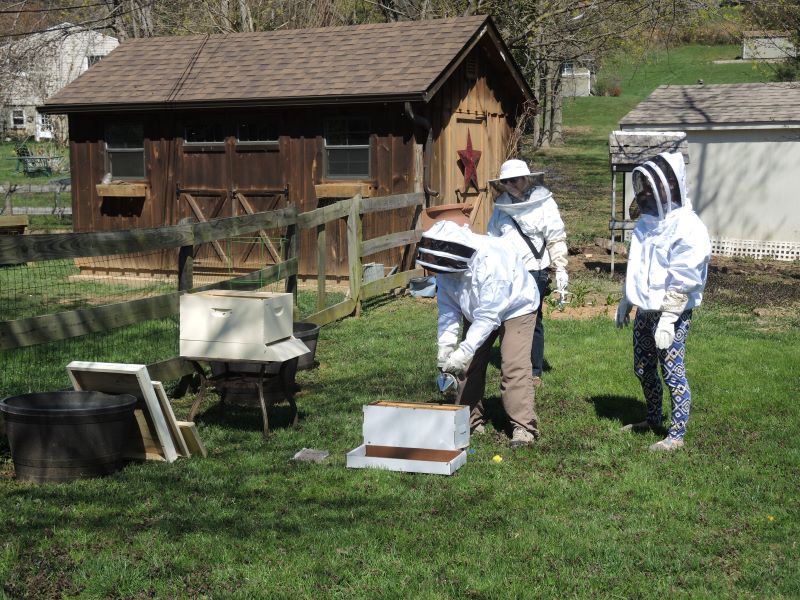
A Bee Club can connect you with a ‘bee buddy’ or mentor who can guide you through the many challenges you will encounter. If this isn’t possible, YouTube is always my go-to for specific problems and learning from more experienced beekeepers.
Keeping Bees Tip #3: Join a Beekeeping Facebook Group
Social media is a huge help to me in my beekeeping hobby. I joined the ‘Women in Beekeeping’ group on Facebook, which has members from all around the world. with similar problems.
Whenever I pose a bee-related question to this Facebook group, I get lots of helpful responses almost immediately. Just reading the back and forth of conversations has helped me tremendously. It’s wonderful how the experienced beekeepers are so willing to help the beginners.
Tip #4: Use Available Technology
Until the last 5 to 8 years, beekeeping was virtually unchanged since the mid-1800s. Now keeping bees is undergoing a revolutionary change. With today’s technology, you can monitor your hives using Bluetooth. (There are so many useful apps to explore!)
I use a BroodMinder, which is a tiny plastic-encased device inserted in the hive to monitor heat, humidity, and weight of the hive. The device relays the information to an app on my phone, so I can observe how the hive is doing. I love being able to monitor the weight of the hive. That’s how I can track how much nectar the hive is collecting. Heat is also a critical measurement to monitor the health of the bees—especially in the winter months.
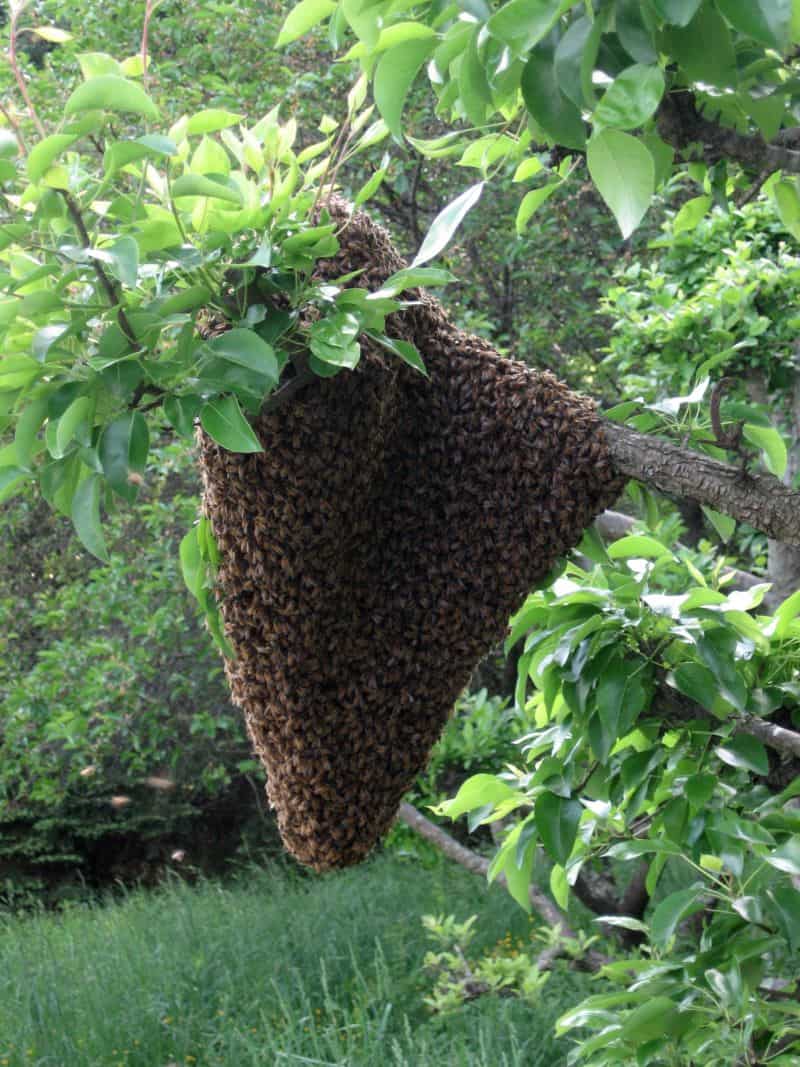
Keeping Bees Tip #5: Learn Swarm Catching
Swarming is a natural process in the life of a bee colony. A swarm happens when a large group of honey bees leaves an established hive. The swarm flies off to establish a new colony, essentially creating two hives from one.
Swarms have always been my biggest challenge. Swarms inevitably happen when a hive gets too crowded, and I’ve learned to capture them to increase and expand my apiary at little to no cost. A frantic call from a worried homeowner is my cue to place my “swarm kit” in the car and go on an adventure to capture it.
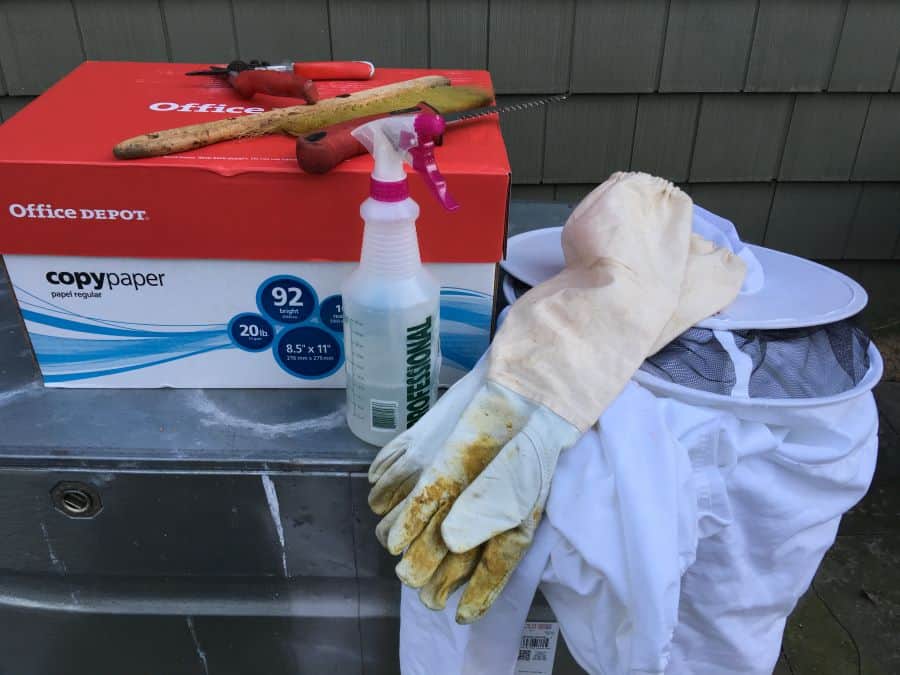
Tip #6: Try a New Type of Hive
You don’t have to stick with the traditional Langstroth hive boxes, which have been used for hundreds of years. Many other types of hives are also available.
A “top bar” hive, with a honeycomb handing from a bar, is another good variety. A Warre hive is a combination of the Top Bar and Langstroth hives. The new Flow Hive is absolutely phenomenal. You can experiment will all these options.
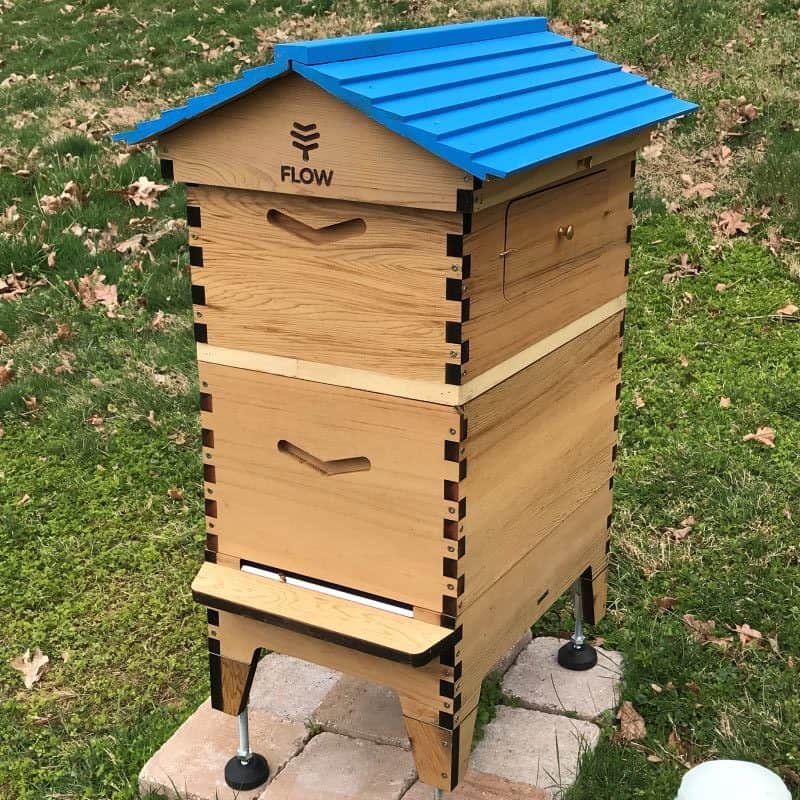
The Flow Hive is a revolutionary new type of hive that allows honey to be extracted simply by turning a lever. A clear observation window allows the beekeeper to peek in to see how the bees are doing without opening and disturbing the hive.
Beekeeping Tip #7: Two Hives are Better Than One
Always, always have at least two hives. I see so many new beekeepers start with one hive, Then it fails for some reason, and they have to begin all over again. If you have two hives, you can switch brood (baby bees) from a stronger hive to a weaker one. Plus, you are more likely to over-winter at least one of your hives.
Tip #8: Let the Bees Create Their Own Queen
Honeybees are capable of creating their own queen bee. They do this by feeding royal jelly to ordinary brood bees.
Too often, beekeepers order expensive hybrid queens from queen producers. This takes time when speed is critical in the spring buildup. For faster results, try splitting your strong hives and letting the hive raise new queens which will mate with local drones (male bees). I have been very successful with my honey production as a result of “nature taking its course”.
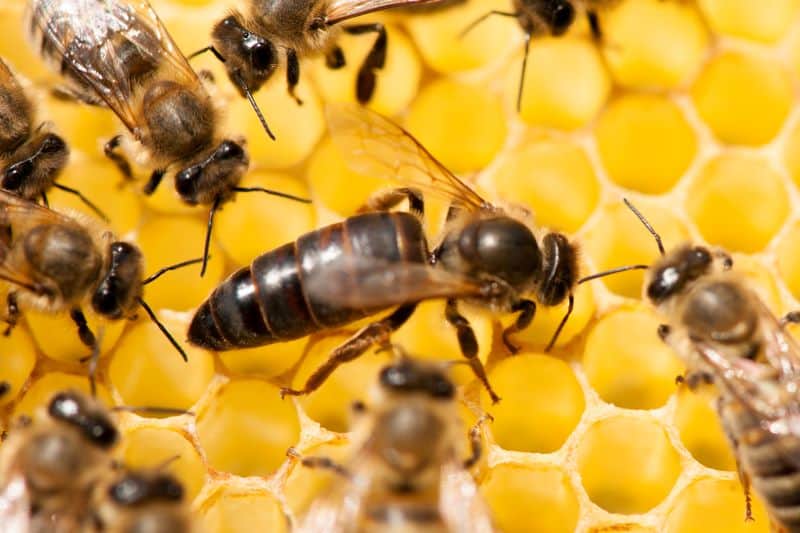
Keeping Bees Tip #9: Locate Your Bees Nearby
Many times, I have been asked by businesses and other homeowners to place hives on their property. I always decline because I like having my bees nearby.
Having my hives right outside my kitchen window, I can see problems right away. Also, I do not relish packing up all my beekeeping tools and driving to a location. This takes time, and I won’t be on top of problems with the hive as they happen.
Tip #10: Don’t Inspect Too Much!
New beekeepers tend to open the hives frequently. Too frequently. Bees are quite capable of being on their own and do not need much managing. Any inspections will stress a hive and in cool weather, the bees can easily chill.
The biggest problem in inspecting is inadvertently damaging—or even worse, killing—the queen! So, keep your inspections to a minimum. Check your hive every 7 to 10 days in the spring, decreasing in frequency during the summer and fall.
Bonus Tip: Beekeeping Supplies and Resources
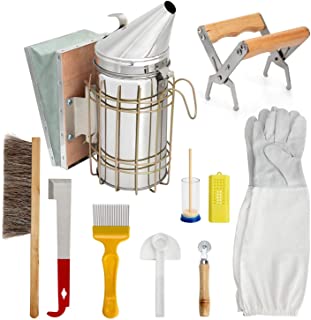
You must have the right beekeeping supplies to be successful at keeping bees. Completed beekeeping kits are available, and that’s a good investment if you are just getting started. Protective gear is available at different price points. Hive and colony maintenance supplies are also important. So is equipment for extracting and bottling honey.
We have put together an assortment of Beekeeping Supplies from Amazon.
Natural Apiary is also a great source of beekeeping supplies and information.
We have also assembled a selection of Beehives Available on Amazon.
Home Garden and Homestead receives a small commission on qualifying sales. Thank you for supporting this website!
A Final Thought
Remember this: beekeeping has its ups and downs. So many new beekeepers throw up their hands, become discouraged, and give up after some setbacks. Stick with the hobby of keeping bees! It is a fascinating adventure that will reward you with delicious natural honey. Plus, keeping a healthy hive of bees is great for the environment.
If you are just getting started in beekeeping–or still thinking about keeping bees, read Follow the Buzz: How to Start Beekeeping



Leave a Reply